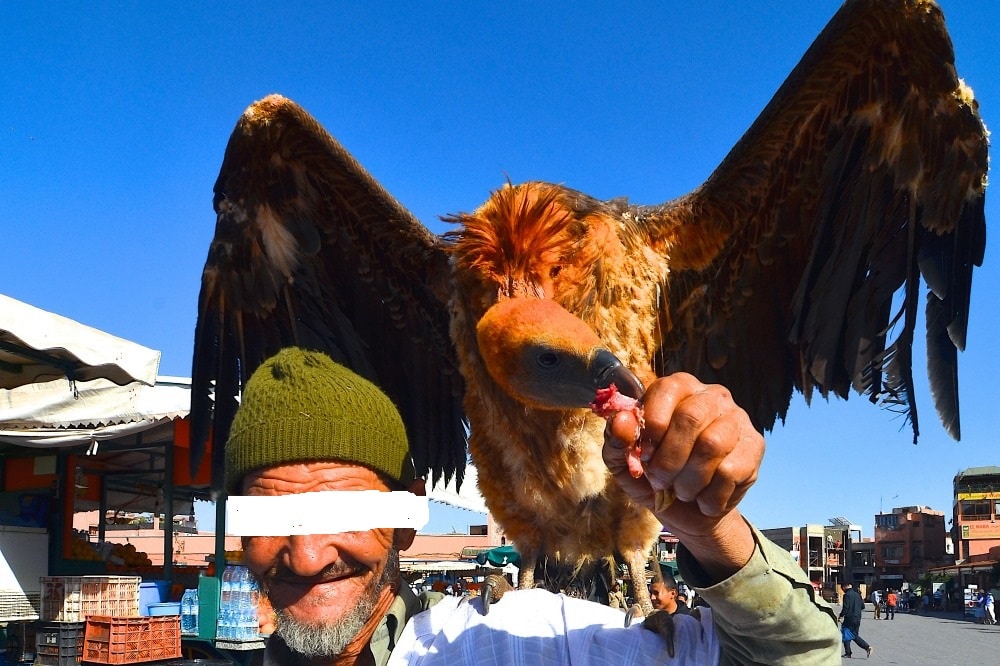A Rüppell’s Vulture used as a photo props at Jemaa el-Fna square in Marrakech for nearly a year.

The Rüppell’s Vulture is undergoing a rapide decline across most of its breeding range in sub-Saharan Africa. Recently, it has been upgraded to the Endangered status in the IUCN Red List (previously was listed as Near Threatened).
Since more than a decade, Rüppell’s Vultures started to accompany Griffon Vultures (Gyps fulvus) to Europe (Iberian Peninsula and France) via Morocco. This poor vulture was most likely one of these visiting birds.
This Rüppell’s Vulture was exhibited continuously at Jemaa el-Fnaa at least between June 2013 and March 2014. It was photographed by Daniel Bergin during his study on the illegal trade in wild birds on 23 June 2013 (Martha Nzisa Mutiso shared with us a photo from 15 June). On 4 December, it was photographed by the ‘Anadolu Press Agency’ and shared it on twitter.
In January 2014, Hassan Talibi took the photo above and recorded the video. And on 19 March 2014, the vulture was still there when photographed by Anne Sterck (it was dyed with the henna, that’s why it appears reddish in the photo below).
Read also:
- African vultures are heading towards extinction (according to a study published by an international team in the scientific journal Conservation Letters).
Vautour de Rüppell exposée aux touristes à Jemaa el-Fna
Cette espèce en déclin qui se reproduit dans la région du Sahel en Afrique a été récemment classée En Danger dans la Liste Rouge de l’UICN (depuis 2012).
Depuis plus d’une décennie, les Vautours de Rüppell ont commencés à accompagner les Vautours fauves (Gyps fulvus) vers l’Europe (Péninsule Ibérique et la France) via le Maroc. Cet individu malchanceux était probablement l’un de ces oiseaux de passage.
Ce Vautour de Rüppell a été exposé de façon continu à Jemaa el-Fnaa au moins entre juin 2013 et mars 2014. Il a été photographié par Daniel Bergin lors de son étude sur le commerce illégal d’oiseaux sauvages le 23 juin 2013 (Martha Nzisa Mutiso a partagé avec nous une photo de 15 juin). Le 4 décembre, il a été photographié par «l’agence de presse Anadolu» et partagé sur Twitter.
En janvier 2014, Hassan Talibi a obtenu la photo ci-dessus et la vidéo. Et le 19 mars 2014, le vautour était toujours sur place quand il a été photographié par Anne Sterck (il a été teint au henné, c’est pourquoi il apparaît rougeâtre sur la photo ci-dessous).
Lire aussi:
- Les vautours africains diminuent de façon critique (selon une étude publiée par une équipe internationale dans la revue scientifique Conservation Letters).
